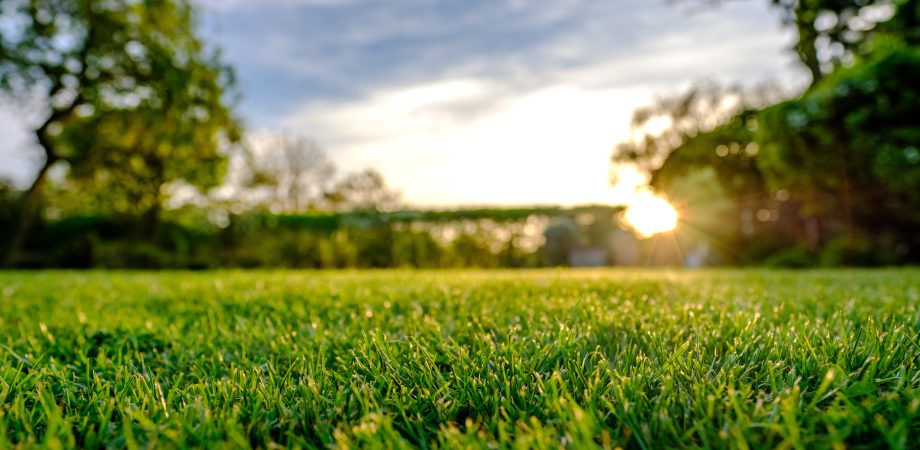Protecting Lawns From Heat Stress

As temperatures rise, so does the threat of heat stress. Turfgrass in lawns and residential properties are at risk of damage from high temperatures and the often low rainfall accompanying them. Managing heat stress involves both cultural practices and products to help, both of which we’ll discuss in this blog post.
Irrigation and mowing are two practices you can use to help your customers’ grass stay healthy through the summer heat.
Since drought is often associated with heat stress, irrigation is a crucial way to support healthy turf. If the property has an irrigation system, perform an audit to ensure it functions properly. Check that each head works correctly and provides even coverage across the property. Use a rain gauge to measure the water volume per hour so you know precisely how long to run irrigation. During intense summer heat, the turf could need up to an inch of water or more per week. Irrigation timing is also important, as it affects disease risk. It’s best to irrigate early in the morning so the grass has plenty of time to dry before temperatures drop again at night.
Proper mowing practices are another way to help manage heat stress. As always, sharp blades provide a cleaner cut and do the least damage to the plant. During high temperatures, it’s a good idea to cut the grass taller. Doing so allows the plant to conserve more water and provide more shade to the soil.
Cultural practices are important in the fight against heat stress, as are the right products. Wetting agents and fertilizers can not only prevent heat stress damage but also help damaged turf recover more quickly.
Wetting agents are a valuable tool to minimize the effects of heat stress on lawns throughout the summer, working both preventatively and curatively. Subdivisions tend to have a high clay content that makes it difficult for them to absorb water. Wetting agents help counteract this by improving water penetration in the soil and making it more available for the plant to access. A good choice is Precip G, which primarily works to keep soil moisture available to plants while also helping move water into the soil profile.
Another key tool in the fight against heat stress is potassium. In higher temperatures, plants need more potassium for their respiration process. That makes this nutrient helpful to apply during times of heat stress. A good product to use is Armament K, which is formulated with long-chain carbon technology specifically designed to deliver potassium to plant roots.
Another product that helps prevent heat stress is Play-On. Play-On delivers nitrogen and potassium along with the micronutrients most necessary for in-season turfgrass success. The result is deeper, stronger, more fibrous root systems for enhanced quality and quicker recovery from heavy traffic.
Finally, Grow-In is a good curative product to help turfgrass recover from the damage of heat stress. Like Play-On, Grow-In delivers a comprehensive array of nutrients that charge the plant and the soil. If you have any properties with bare spots from heat stress, fall overseeding can help fill these in. Grow-In is useful for seeding projects or just helping turf recover from summer.
With curative and preventative products, plus good cultural practices, you can mitigate the risk of heat stress for your customers this summer. Contact your ATS rep for help selecting the right wetting agent or fertilizer for the job.







